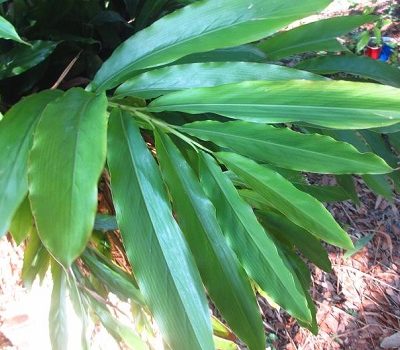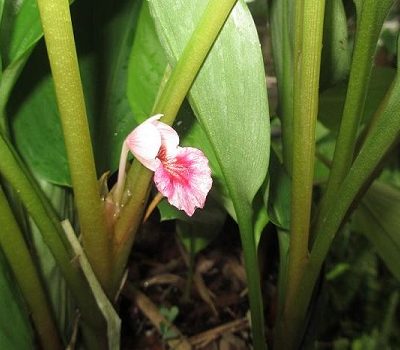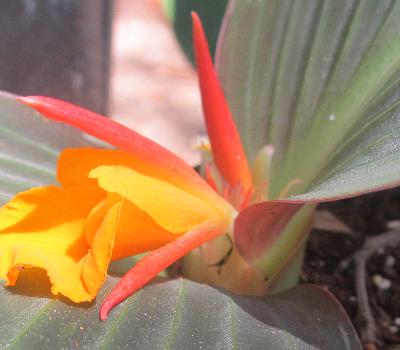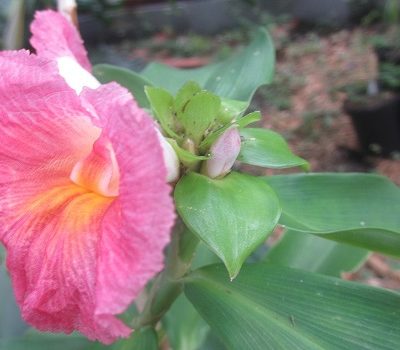Sweet Thai Ginger
Most westerners are unfamiliar with this culinary spice, its bright refreshing flavor, and its crunchy texture. Sometimes called chinese keys, or finger root, the roots of the plant are usually used fresh, sliced thin, in salads or as a garnish. The flavor is similar to culinary ginger (Zingiber officinale), but sweeter, and much less pungent. The plant makes a wonderfull addition to a tropical plant collection, as its foliage and flowers are quite beautiful.
Boesenbergia rotunda is a good choice for people living in Northern latitudes because the plant will go completely dormant in the Winter. Simply dig it up and store it in a paper bag in a dark cool place and plant it in the Spring.
Origin
Southeast Asia
Family
Zingiberaceae
Binomial nomenclature
Boesenbergia rotunda
Common names
Finger root, Chinese keys, Sweet Thai ginger
Description
The Chinese keys plant grows to a height of 18″-24″. The ovate-oblong or elliptic-lanceolate leaves emerge from red leaf sheaths. Being from the family zingiberaceae, they grow pseudostems rather than true stems, so propagation is achieved by division of the bright yellow aromatic rhizome. Pink flowers emerge from the pseudostem apex, and are usually hidden beneath the leaves.
Height
18-24″
Temperature/Zone
Zone 9, 28°F or higher. In zones lower than 9, They can be Wintered indoors once they go dormant. Replant them in the Spring after the last freeze.
Light
Shade to part shade.
Water
Keep them evenly moist during the warm months, but allow them to dry out completely during the winter.
Fertilizer
I use an all purpose fertilizer while they are growing.
Cultivation
Finger root is a very easy ginger to grow. I have found it to be just as successful in the ground as it is in containers. B. rotunda prefers rich, well drained soil. Simply plant the rhizome 1″ deep, and keep evenly moist. It will emerge in approximately two weeks.
Pests
Scale insects sometimes attack B. rotunda.










Hi I bought a few plants of The Fingerroot last season and loved it! i’m interested in purchasing more and wanted to know if you offer any bulk pricing on this item? If so, please share for my considerations. Thaks for your help.
Good afternoon Randy,
I have one question for you. are you live plant certify to shipping to California?
Thank you,
Kantima Green
I do ship there.